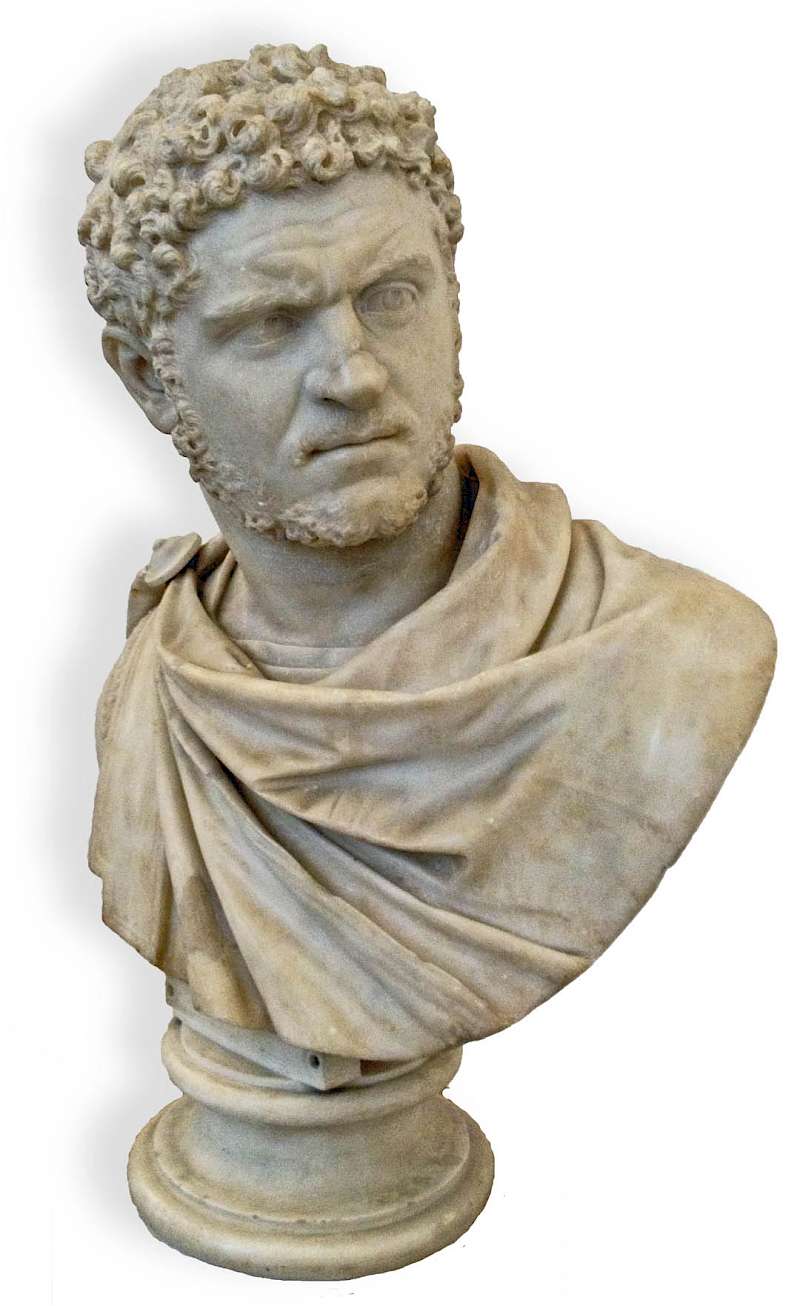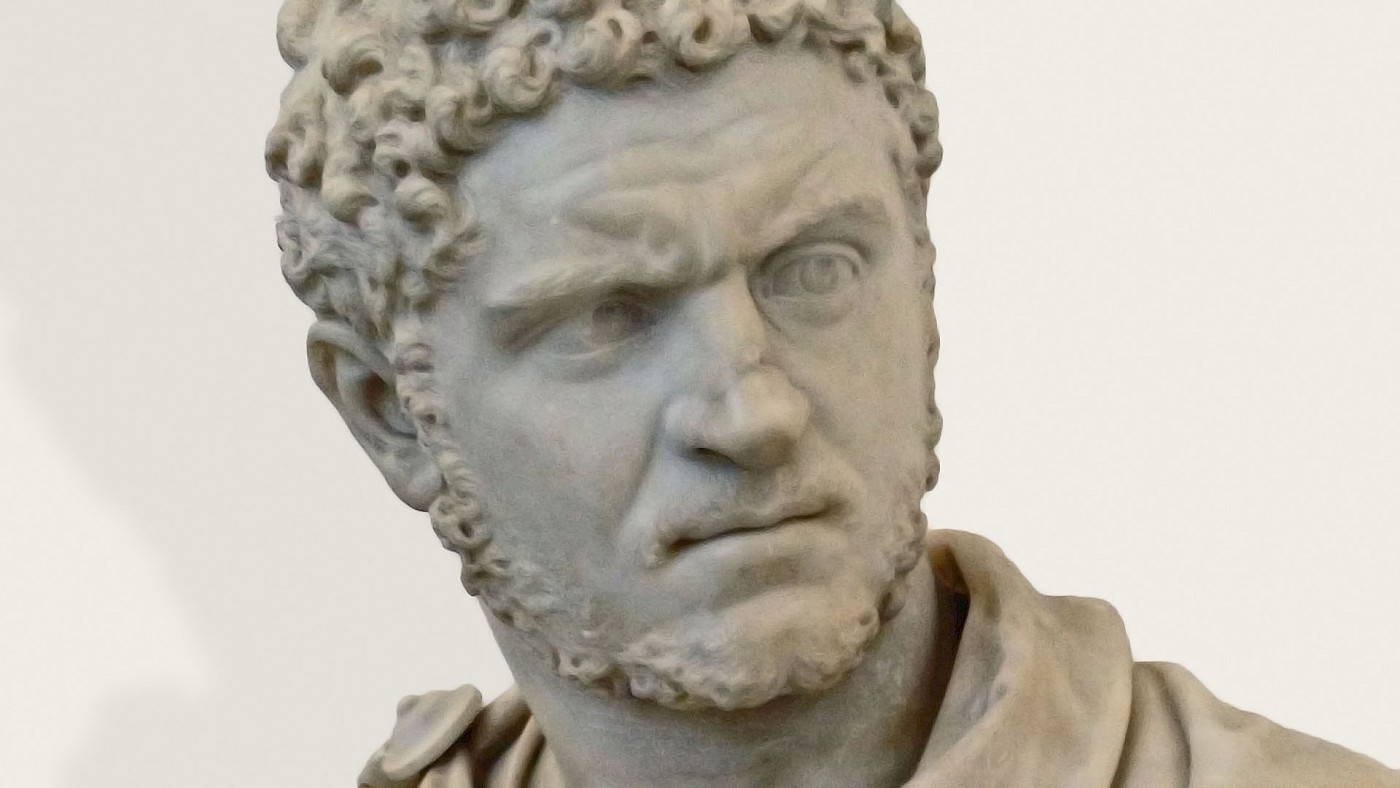The last of the Antonines had been Commodus, the infamous (and infamously insane) son of “Good Emperor” Marcus Aurelius. Following the assassination of Commodus, there was a brief period of unrest, with an army general, Septimius Severus, ultimately emerging victorious and establishing himself as ruler. While outwardly the Severan dynasty tried to project harmony and strength, the house suffered from internal strife, with family members killing each other as a matter of routine.
Perhaps the most notorious of the Severans was Caracalla. The National Archaeological Museum in Naples has an extraordinary marble portrait bust of the man. Here is a picture that I took of this bust a few years ago:

In Roman Art (second edition; 1995), Nancy and Andrew Ramage write that “with the advent of Caracalla began a new era of cruelty, such as had rarely been witnessed for over a century. One look at his portraits […], all of which indicate at least a measure of the brutality of the man, will give a good sense of the character that lay behind so much evil” (p. 250).
Caracalla had been born in 188 in Lugdunum (modern Lyon, France). Caracalla is his agnomen of nickname, adopted from the Gallic hooded tunic that he routinely wore. In 198, his father Septimius Severus appointed him co-ruler of the Empire. In 209, Caracalla’s younger brother was also appointed co-ruler. But shortly after their father’s death, in 211, Caracalla had his younger brother murdered by the Praetorian Guard, leaving him to rule the Roman Empire on his own.
Supposedly, his father had given Caracalla the advice to take care of the army first and foremost. This shouldn’t be too surprising, considering how Septimius Severus had himself risen to power. But Caracalla perhaps carried things a bit too far, becoming positively obsessed with all things military. But he never really had the change to achieve anything noteworthy in that sphere. In 217, while preparing an invasion of Parthia, he stopped to urinate by the side of the road, at which moment he was stabbed to death by a soldier, Justin Martialis (Herodian 4.13).
The murder had been arranged by an ambitious prefect of the Praetorian Guard, Macrinus, who had himself declared emperor with the support of the army. He was killed a little later, in 218, and succeeded by another Severan, Egalabus. The Severan Dynasty would continue to cling to the throne until AD 235, when the last ruler of that house, Alexander Severus, was assassinated during a meeting with his generals.
In many ways, the Severan dynasty had only staved off the inevitable: a period of massive instability known today as the “Age of the Soldier-Emperors” (AD 235–284), when more than fifty military leaders, in short succession, temporarily managed to seize control of the imperial throne. One of them, Diocles, eventually established himself as the emperor Diocletian and created the institution known as the Tetrarchy in an attempt to return law and order to the Roman Empire.
While one could easily interpret Caracalla’s scowl, present in so many of his portraits, as representing a brutal man, it does anticipate the stern features of many of the later Soldier Emperors, who often had wrinkled foreheads, frowns, and indeed contracted brows. These men lived in an age of great political instability, when a Roman Emperor could just as easily be killed by an upstart general as a close member of his own family.
Seen in this light, the scowl was perhaps intended to project strength. The fact that Caracalla is frequently shown to look to his side might also be interpreted as a warning to his enemies that he at least tried to keep a watchful eye on what was happening on the sidelines.
